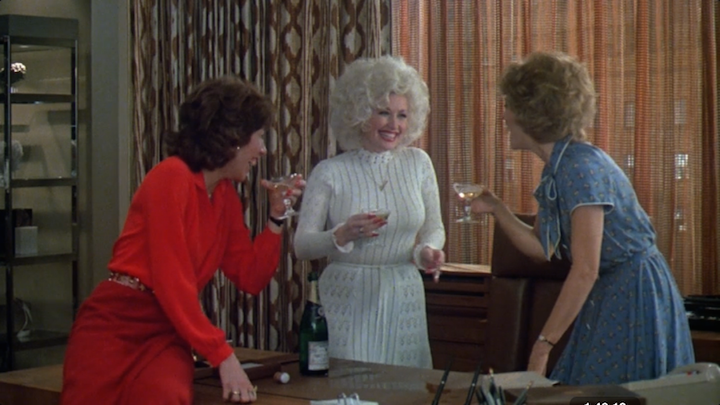 Don’t be fooled by the setting. For all its images of cars running the streets of New York, Martin Scorsese’s Taxi Driver is a western. Travis Bickle (Robert DeNiro), the film’s loner antihero, struts into town wearing cowboy boots and a button-down flannel shirt. He challenges one of the town’s bullies to a showdown, rescues a whore with a heart of gold, and by the film’s end has become a hero. The cab is his steed.
Don’t be fooled by the setting. For all its images of cars running the streets of New York, Martin Scorsese’s Taxi Driver is a western. Travis Bickle (Robert DeNiro), the film’s loner antihero, struts into town wearing cowboy boots and a button-down flannel shirt. He challenges one of the town’s bullies to a showdown, rescues a whore with a heart of gold, and by the film’s end has become a hero. The cab is his steed.
What I would argue sets Taxi Driver apart from My Darling Clementine (1946) and the classic westerns is not its setting, but rather the unclear lines it draws between right and wrong. Travis’s moral compass is compromised from serving his country in a dishonorable war (Vietnam). Though he knows there are villains in his midst, he can’t see them clearly through the exhaust of the taxi and the glare of the television screen. Had he successfully killed his first target (an aspiring politician) the newspapers would not have celebrated him as a hero — they would have branded him a lunatic and assassin. To resort to the terms that you used in your middle school English class, is Taxi Driver about a man vs another man or a man vs the world? Travis seems to be deciding.
 As iconic as DeNiro’s mohawk and the “Are you lookin’ at me?” scene (pictured above) have become, it might be surprising to learn that the man most responsible for capturing them — cinematographer Michael Chapman — did not earn one of the four Oscar nominations the film received in 1976.
As iconic as DeNiro’s mohawk and the “Are you lookin’ at me?” scene (pictured above) have become, it might be surprising to learn that the man most responsible for capturing them — cinematographer Michael Chapman — did not earn one of the four Oscar nominations the film received in 1976.
The snub probably had something to do with the fact that Taxi Driver is not pretty in the way that the films the Academy recognizes usually are. In fact, the only thing arguably “pretty” about the movie is Betsy, played by Cybill Shepherd in her best film role this side of The Last Picture Show (1973). Shepherd enjoys a classic Hollywood entrance, emerging from a flurry of pedestrians and wearing a flowing white dress. The shot confirms the words that DeNiro is saying in voiceover — that Betsy looks like angel in contrast to the “filthy mass” surrounding her.
 It doesn’t take long for Travis to decide that Betsy is not the angel he thought she was. She is a tireless campaigner for the Senator Charles Palantine (Leonard Harris), who is running for President on the typical platform of telling voters exactly what they want to hear. At first, she is intrigued by Travis’s forwardness and bravado, but when he takes her on a date to an adult movie theater, she is offended and stops taking his calls.
It doesn’t take long for Travis to decide that Betsy is not the angel he thought she was. She is a tireless campaigner for the Senator Charles Palantine (Leonard Harris), who is running for President on the typical platform of telling voters exactly what they want to hear. At first, she is intrigued by Travis’s forwardness and bravado, but when he takes her on a date to an adult movie theater, she is offended and stops taking his calls.
The scene of Betsy storming out of the movie theater replays the earlier one introducing us to the girl prostitute Iris, who is played by a very young Jodie Foster. In the earlier scene, Iris is pulled out of Travis’s cab by her pimp boyfriend (Harvey Keitel). In the later scene, Travis — now in the unenviable position of the pimp — finds himself shouting at a woman getting into a taxi in order to escape what she perceives as his dangerous sexuality. Strictly speaking, Betsy is not a prostitute, but the film establishes a number of connections between Iris’s work as a prostitute and Betsy’s campaigning for Palantine (her pimp). If Iris is the whore with a heart of gold that Travis eventually rescues, then Betsy is the whore with a heart of slate that does not want to be rescued.
 My best shot (above) is not one of DeNiro’s famous gun or mohawk scenes. It arrives in the film’s last minutes and does the important work of wrapping up the narrative threads still lingering after Travis’s shootout at the whorehouse/
My best shot (above) is not one of DeNiro’s famous gun or mohawk scenes. It arrives in the film’s last minutes and does the important work of wrapping up the narrative threads still lingering after Travis’s shootout at the whorehouse/
Travis, the taxi driver, spends much of the film looking through windows at other people. As humans, we’re wired to interpret looking as longing, and that is certainly true of the many times that Travis gazes into the office at Betsy working. This shot returns Betsy to the same angelic white she had been wearing the first time that Travis saw her, but this time she is the one doing the looking and the longing. She is not seeing the man who strapped firearms all over his body and attempted to murder her boss/pimp. She is seeing the man she has read about in the newspaper — the man whose intentions and actions have been blurred to the point that he has been celebrated as a vigilante who took down a mob boss and child prostitution ring all on his own.
What does it mean that Travis (who so often looks right into the camera) refuses to meet Betsy’s eyes? Has he moved on? Has he decided that Betsy is beyond his help? Does he still plan to liberate her from Palantine the way he had liberated Iris from the pimp? Even for us Travis’s plans and intentions are blurred beyond sight. He’s like any movie cowboy who’s worth the price of his belt buckle — his bravado is impenetrable.
 You have reached my (Dusty’s) home page at the Digital Writing and Research Lab at UT Austin. I use the site to collect all sorts of digital things that are scattered across the web, including materials for my classes on rhetoric and composition.
You have reached my (Dusty’s) home page at the Digital Writing and Research Lab at UT Austin. I use the site to collect all sorts of digital things that are scattered across the web, including materials for my classes on rhetoric and composition.



















